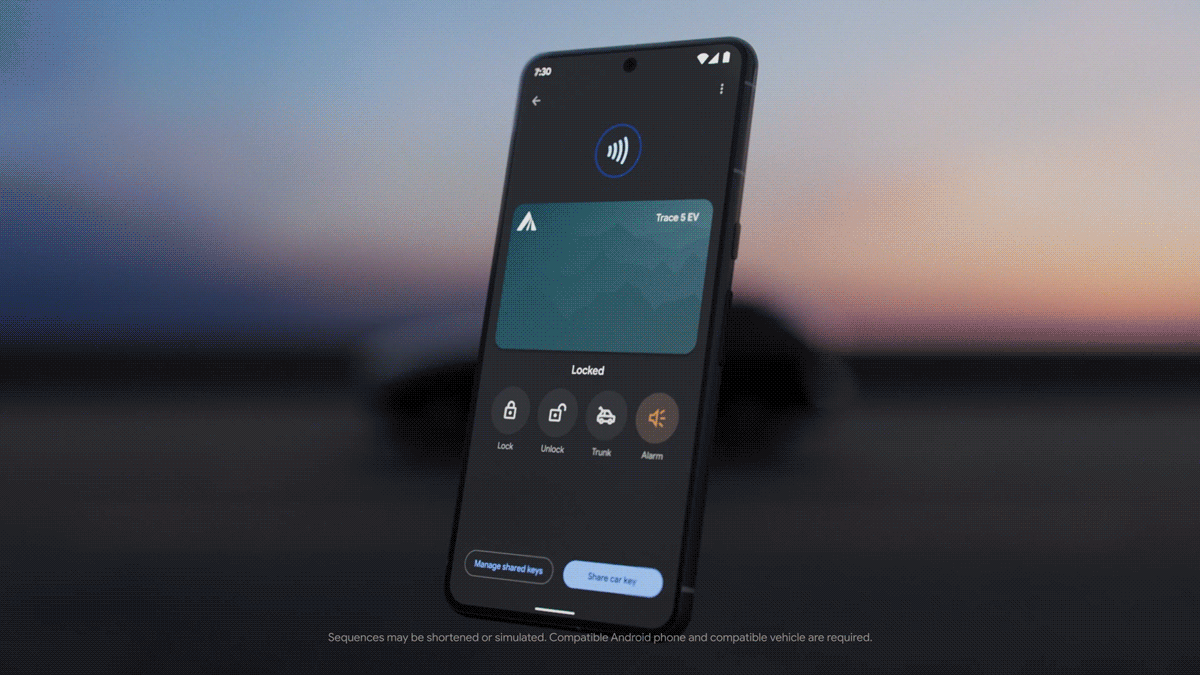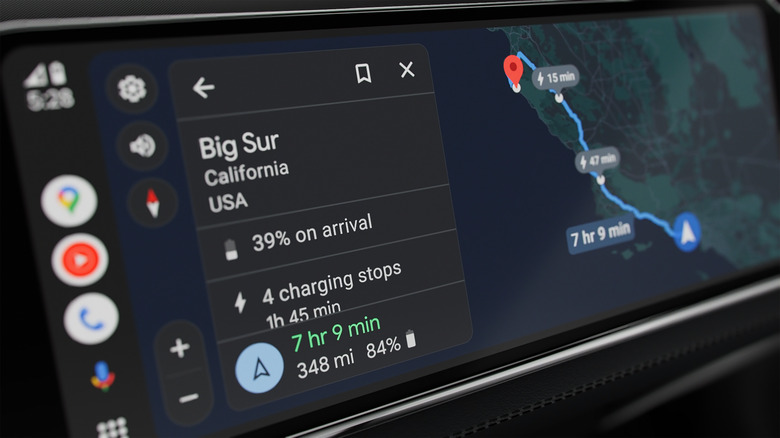Google Maps Can Now Display Real-Time Battery Information In Your EV
Google Maps is obviously the most popular mapping service in the world, but both Google and Apple have had an issue with electric vehicle makers like Tesla and Rivian. Both of those companies favor running their own in-house software to power their driving experiences over Apple's CarPlay and Google's Android Auto experiences.
The benefit of doing that, for those brands, is that they can more closely integrate the driving and charging experience in the vehicle (amongst a mile-long list of other benefits). So, up until now, running something like Google Maps in an EV has been worse than running the car's built-in mapping system since Google Maps couldn't interface with the vehicle's battery information. Up until now is the most important part of that sentence.
In a press release, Google announced that it is rolling out real-time battery information for Google Maps. With this new feature, compatible electric vehicles will be able to share battery info directly with Google's mapping service, enabling Google Maps users to understand how much charge they'll have when they arrive at their destination, suggest charging stations along the route, and also estimate how long a charge will take.

The company says it is rolling the feature out first to the Ford Mustang Mach-E and F-150 Lightning "in the coming months." In addition, starting today, you can now send trips you've planned on Google Maps on your Android or iOS phone directly to EVs with Google built-in.
Electric vehicles compatible with Android Auto can share real-time battery information with Google Maps – coming first to the Ford Mustang Mach-E and F-150 Lightning in the coming months, with others to follow. This integration will make driving an electric vehicle easier, as Google Maps will provide your estimated battery level upon arrival at your destination, suggest charging stops along the way and even estimate how long charging will take based on your vehicle.

In addition to rolling out new Google Maps features, the company announced a number of new apps coming to vehicles with Google built-in. Chrome, PBS Kids, Crunchyroll, and the Weather Channel app are all starting to roll out today.
Today, Chrome browser is starting to roll out to select Polestar and Volvo cars in beta, and will be available in more cars later this year, so you can do a little shopping or access your saved bookmarks to keep you busy while parked. And if you need to keep the kids entertained (or hey, maybe keep yourself entertained!), you can watch shows from PBS KIDS and Crunchyroll, which are both now available in select cars with Google built-in. Finally, by popular demand, The Weather Channel app is now available for cars with Google built-in, giving you peace of mind on the road. Now you can stay up-to-date on changing weather conditions with hourly forecasts, follow-me, alerting and "Trip View" radar right from your dashboard.

Google is really leaning hard to build Google directly into vehicles as opposed to relying on Android Auto. The company says that Nissan, Ford, and Lincoln will all have models rolling out this year that have Google built-in and that Porsche will have its first models launching "in the future." It also announced that its digital key technology will be rolling out to select Volvo models "soon."
Digital car key availability also continues to expand, rolling out to select Volvo cars soon and to even more phone and car brands in the future. Using a digital car key, you have the ability to unlock, lock and start your car with supported Android phones and securely share keys with friends and family on iOS or Android phones.

As Google continues to integrate its software and services into vehicles, Apple is continuing to push its next generation of CarPlay. The company recently announced that the first vehicles to support the new version of CarPlay will be models from Aston Martin and Porsche later this year.
